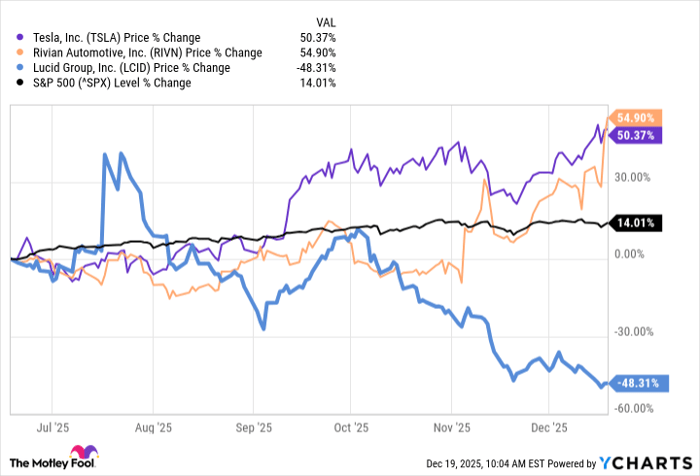“`html
Brookfield Renewable: A Strong Investment in Clean Energy Growth
Finding worthwhile investing opportunities can be challenging. Nevertheless, Brookfield Renewable (NYSE: BEPC)(NYSE: BEP) stands out as a compelling option. As a leading global renewable energy firm, Brookfield is well-positioned to meet the growing demand for clean energy, a trend expected to continue for decades.
The company’s scale, expertise, and robust balance sheet provide a strong foundation for generating significant value for investors. This includes a lucrative and expanding dividend, currently yielding over 5%.
Strong First Quarter Performance
Recently, Brookfield Renewable released impressive first-quarter results, reporting a record $315 million, or $0.48 per share, in funds from operations (FFO). This marks a 7% increase year-over-year and a 15% rise when adjusted for prior year’s hydro generation.
The company’s diversified portfolio of hydro, wind, solar, and energy storage assets produced stable, inflation-linked cash flows. Additionally, Brookfield’s growth strategy capitalizes on the value gap between its existing assets and new investment opportunities.
So far this year, Brookfield and its partners have closed or agreed to sell $900 million in assets, netting $230 million to Brookfield. The firm benefited from high demand among private investors for contracted renewable energy assets, including the sale of its interest in First Hydro at nearly triple its investment and a 25% stake in the Shepherds Flat wind farm at nearly double its original capital.
Brookfield intends to redeploy these proceeds into promising new investment opportunities. Recently, it agreed to acquire National Grid‘s renewables platform, which includes 3.9 gigawatts (GW) of operating and under-construction assets, a 1 GW pipeline of construction-ready projects, and over 30 GW of primarily utility-scale solar and battery storage development projects. The company also finalized its acquisition of the remaining interest in European renewable energy developer Neoen.
A Strategy Built for Growth
Brookfield Renewable is optimistic about its ability to enhance shareholder value moving forward. The strong and growing demand for renewable energy bolsters this confidence. In the first quarter, the firm signed contracts to deliver an additional 4,500 gigawatt hours per year.
Significant progress has also been made in relation to a major renewable energy agreement with Microsoft. Brookfield anticipates delivering an initial 10.5 GW of capacity for the tech giant in the coming years, further fueled by robust demand from other prominent technology companies seeking to meet their cloud and artificial intelligence (AI) energy needs.
In the first quarter, the firm completed 800 megawatts of new renewable energy-generation capacity and is on track to finish 8 GW of projects this year. Future projections indicate an increase to 10 GW of annual capacity additions.
The company’s diversified global renewable energy platform, characterized by highly contracted and inflation-linked assets, provides great stability. These assets generate consistent and steadily increasing cash flow, supporting Brookfield’s high-yielding distribution and ongoing reinvestment.
Brookfield’s significant scale grants it multiple advantages. Its purchasing power leads to better terms with vendors and diversification within its global supply chain, which helps mitigate inflation impact and other cost pressures.
Additionally, it maintains one of the strongest financial positions in the sector, holding approximately $4.5 billion in liquidity. This financial flexibility enables ongoing investments in a favorable market, supported by a strategic capital recycling process.
Visibility for Sustained Growth
Brookfield Renewable anticipates that a combination of organic growth factors—such as inflation-linked rate increases, new development projects, and strategic acquisitions—will drive annual FFO growth of over 10% per share through at least 2029, with strong visibility extending into 2030. This growth supports the company’s dividend increase plans, projecting a 5% to 9% annual rise. Such a blend of income and growth is likely to deliver substantial total returns in the upcoming years, reinforcing Brookfield Renewable’s appeal as a long-term investment.
Should You Consider Investing $1,000 in Brookfield Renewable?
Before making any investment decisions, it is essential to evaluate…
“`
Brookfield Renewable Misses Top Stock Picks Despite Past Performance
Investors interested in Brookfield Renewable should take note of recent stock analysis findings. The Motley Fool analyst team has recently identified what they consider the 10 best stocks for investment, and, notably, Brookfield Renewable is not among them. The selected stocks are believed to offer significant returns over the coming years.
Historic Insights from Successful Picks
Historically, past recommendations have yielded substantial returns. For instance, when Netflix was highlighted on December 17, 2004, a $1,000 investment would now be worth $623,685. Similarly, Nvidia, which made the list on April 15, 2005, would result in an investment growing to $701,781.
Performance Metrics
It’s essential to contextualize the performance of Stock Advisor. The service boasts a total average return of 906%, significantly outpacing the 164% return of the S&P 500 during the same timeframe. This information reinforces the potential value in exploring their current top ten picks.
Investment Disclosures
For those interested in uncovering the latest picks, detailed information is available for Stock Advisor members. It may also be beneficial to review investment strategies and updates from reputable sources.
Matt DiLallo holds positions in Brookfield Renewable and Brookfield Renewable Partners. The Motley Fool has positions in and recommends Microsoft, in addition to Brookfield Renewable, Brookfield Renewable Partners, and National Grid Plc. They also recommend long and short options on Microsoft. For more information, please refer to their disclosure policy.
The views and opinions expressed herein are those of the author and do not necessarily reflect those of Nasdaq, Inc.






